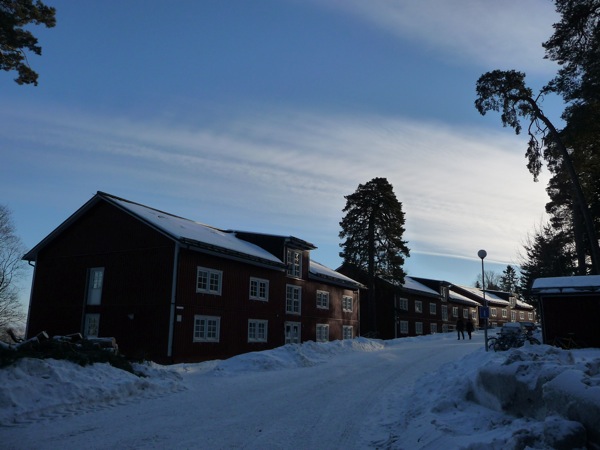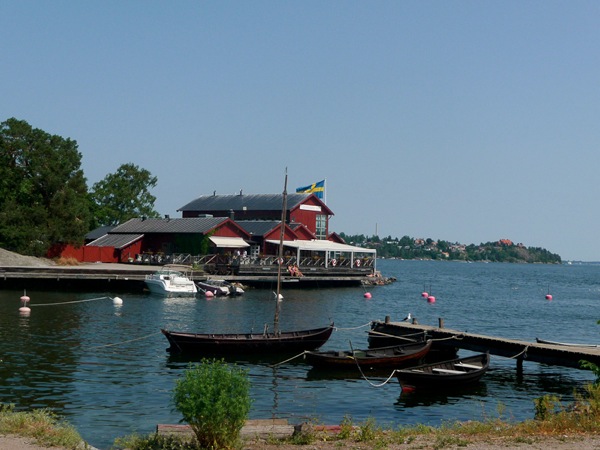Learning Swedish: Swedish classes in Sweden
This is part one of my series in learning the Swedish language – Swedish classes in Sweden
SFI: Svenskundervisning för invandrare or Swedish for Immigrants
SFI is run by the Swedish government and is free. You are able to take the course if you have a Swedish person number and a residency permit. SFI offers daytime courses of between 15 to 20 hours a week and night courses of 6 hours a week. The night classes seem to be broken into 2 x 3 hours after work.
I have no personal experience with this course, and have heard mixed reviews from friends. Most have said the classes are well organised and taught however a few have likened their SFI experience to that of a circus. Still, considering the fact that it is free, I think it is worth signing up and hoping for the best. Class sizes are bigger than in the paid classes, which is to be expected, and SFI is offered throughout Sweden.
If you live in Stockholm, you can take the test at the SFI centre at Hornsgatan 124 (Zinkensdamm T-Bana):
Monday, Tuesday and Thursday at 10:30 am to 2:30 pm
Wednesday at 1:00 pm to 5:00 pm
Swedish for Academics (you can read about my experiences with SFEJ here)
The Swedish for academics course, and those for trained professionals are also offered by the government for free, and are around 30 hours of study per week. Classes are broken down by specialty, and a university degree, and for some reason, minimum English language are required for many of these courses. This is ideal for someone who can spare the 30 hours a week necessary to attend class, with presumably 10 hours or so of homework per week on top of that.
This course is broken down into:
Swedish for Educators (SFP)
Swedish for Engineers (SFINX)
Swedish for Economists, Lawyers, Social, Human Resources and Systems Specialists (SFEJ)
Swedish for Qualified Healthcare Workers (nurses, doctors, veterinarians, etc)
Swedish for Entrepreneurs
Swedish for Craftsmen (for example, carpenters, welders, and bricklayers)
Swedish for Truck Drivers
Swedish for Bus Drivers
I am going to be starting SFEJ in March, so you can follow me on my journey there. I am curious to see how I will 1) survive 30 hours of Swedish class a week and 2) How quickly my Swedish will improve.
To get into the course, I filled out the application form and sent it in with proof of my qualifications, my resume, proof of residency and so on. Then I was called in to take the Swedish exam, which consisted of a computer exam covering listening, reading and writing, and various chats with people working at SFI which seemed to result in a speaking grade. All in all, with waiting, being sent to the wrong person, being given the wrong exam to start with, doing the exam for the level after SFI and other running around, I was at the testing centre for about 5 hours. I hope your visit there goes a little more smoothly! Don’t forget to take a number when you arrive either, and bring along your passport for ID.
I am looking forward to the SFEJ course, and think it is pretty amazing that the government offers such a specialised course for free. Of course it is in any governments interest to help highly skilled migrants to quickly improve their Swedish skills and contribute to the economy, however many governments seem to forget this, and it is refreshing to see Sweden putting something into practice. As for the quality of the course, I don’t have an opinion yet, but i’ll be updating once I get started.
Folkuniversitetet
Folkuniversitetet is an adult education institute in Sweden and offers all sorts of courses, including Swedish language. It runs based on the Common European Framework of Reference for Languages, with A1 being an absolute beginner, (A1, A2, B1, B2, C1, C2), and C2 being at a near native equivalent. As the classes are a mix of nationalities, the course is obviously run in Swedish, even at the beginner levels, which is not as difficult or intimidating as it might sound.
Folkuniversitetet offers a range of courses, for example I have taken the 2 nights a week course in Uppsala which runs for around 5 weeks, as well as the monday to friday course, for two hours a day for a month. They also offer courses that focus entirely on conversation and other on grammar. These are paid courses, ranging from 2675 SEK for the 2×2 hours for 5 weeks course, and 4000SEK for the intensive course 5 days a week.
From personal experience, the quality of these courses depend entirely on the teacher you have, and I have been in both good and average courses. However, I have found in all 3 of the courses I have taken at the Folkuniversitetet that the teachers ask for feedback after a couple of lessons to make sure they focus on the areas we wish to improve – say more conversation. Class sizes are small – around 6 to 10 people, which gives plenty of opportunity for everyone to chat.
Quite a few people in my intensive course were just in Sweden for a month to take the course, before returning home to their job/studies, so this might be a good choice for you if you are only in Sweden short term, or want to pop over to improve your Swedish and enjoy the summer!
Medborgarskolan
Medborgarskolan is similar to Folkuniversitetet, an adult educational institution offering Swedish as a second language classes. They have translated the names of the courses into English as well, and offer intensive and normal courses.
University
Stockholm University offers a course for more advanced students for free. You can read more about it here. I’ve heard positive things about this course from a past student.
If you are an exchange/ERASMUS student, Swedish classes are often offered during your time in Sweden. At Uppsala University for example, you can read about classes here.
Universities and adult educational institutes in your home country might offer Swedish as well, so it is worth calling their language department and seeing if you can join. I studied Swedish at The University of Melbourne in Australia for a year before moving to Sweden, and it was a huge help in making me feel more at home when I arrived.














